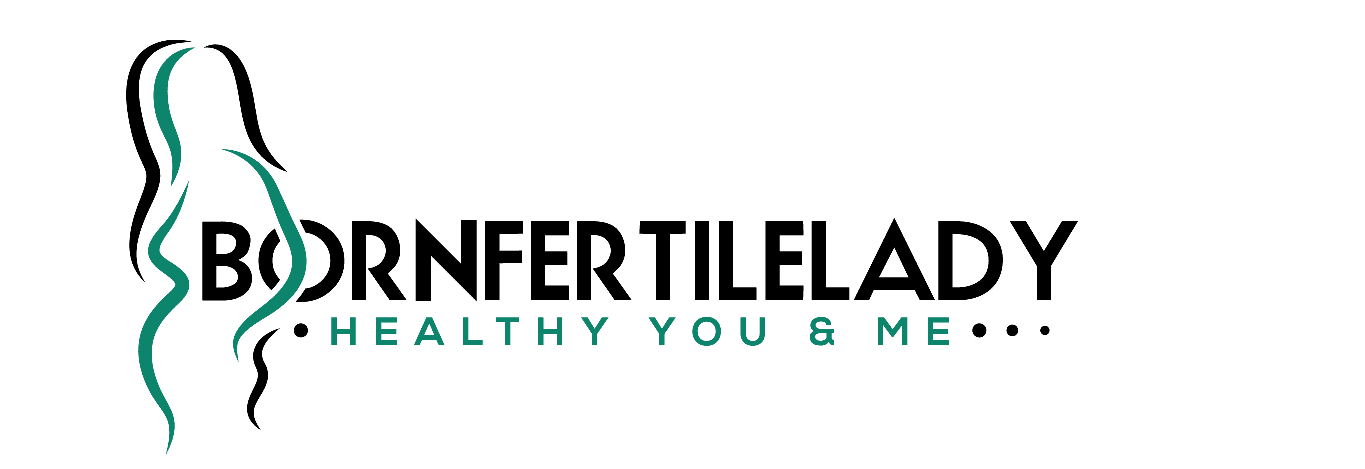How to lose face fat? How to get a jawline? Many people ask the question of how to lose face fat and get a jawline, and unfortunately and sometimes funnily, many of these people go extreme and extra unfathomable miles just to lose the ‘deadly’ face fat.
Some people are so desperate to lose their face fat and get a jawline that they do all sorts of things to themselves to do that, and sometimes, harming themselves in the process.
But if you are here today, then your search has ended. This article outlines nine effective tips that may help prevent and reduce excess facial fat and get a jawline.
Keep reading.
How to Lose Face Fat and Get a Jawline
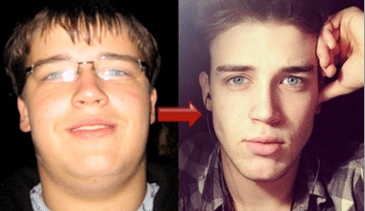
Losing weight in a specific area can be challenging. According to the experts, spot reduction of facial fat is not possible. You need to focus on the overall weight loss rather than targeting a specific area.
Making certain lifestyle changes can help you lose weight and achieve a slender face. If the cost is not a concern, cosmetic surgery can improve your jawline look[mfn]https://www.medicalnewstoday.com/articles/326262#facial-exercises[/mfn].
Read below about 9 different and effective tips that can help lose face fat and jawline.
1. Do Facial Exercises
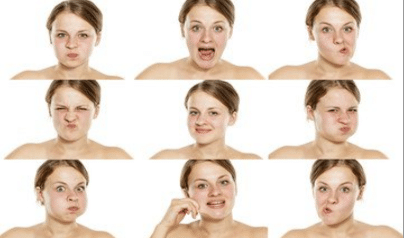
Facial exercises can be used to improve facial appearance, combat aging, and improve muscle strength. Anecdotal reports claim that adding facial exercises to your routine can also tone facial muscles, making your face look slimmer.
Performing facial exercises regularly can uplift your facial appearance of thick scars. It can be used to loosen up and lessen the appearance of a tight scar. Besides, it improves the blood flow to the face and increases muscle strength. Some of the popular facial exercises include:
- Smile exercise: Hold a big smile while clenching your teeth for a few seconds.
- Cheek puff exercise: Hold the air in your mouth by pushing your cheeks out. Move the air from one side to the other.
- Lip exercises: Pucker your lips in the middle and then move your pucker from side to side.
- Exercises to strengthen the jaw muscle: Stretch your neck out and press your tongue to the left and right.
Some of the most popular exercises involve puffing out your cheeks and pushing the air from side to side, puckering your lips on alternating sides, and holding a smile while clenching your teeth for several seconds at a time.
Although evidence is limited, one review reported that facial exercises may build muscle tone in your face. Another study showed that performing facial muscle exercises twice per day for 8 weeks increased muscle thickness and improved facial rejuvenation[mfn]https://www.healthline.com/nutrition/lose-fat-in-face-cheeks[/mfn].
Keep in mind that research is lacking on the effectiveness of facial exercises for fat loss specifically. More studies are needed to evaluate how these exercises may affect facial fat in humans.
By toning your facial muscles, facial exercises could make your face appear slimmer. Although research is limited, one study found that performing facial muscle exercises improved muscle thickness and facial rejuvenation.
2. Practice Cardio Exercise
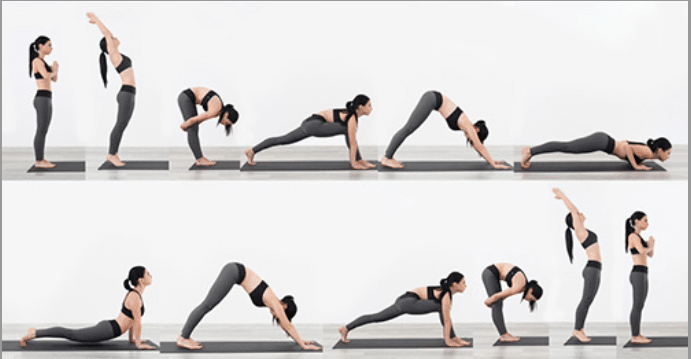
Often, extra fat in your face is the result of excess body fat. Losing weight can contribute to fat loss and help slim down your body and face. Cardio, or aerobic exercise, is any type of physical activity that increases your heart rate.
Cardio exercise is widely considered a highly effective method for weight loss. Multiple studies have found that cardio can help promote fat burning and increase fat loss.
What’s more, one study found that women with obesity experienced greater fat loss when they engaged in more cardio exercise. Try to get 150–300 minutes of moderate to vigorous exercise each week, which translates to 20–40 minutes of cardio per day.
Some common examples of cardio exercise include running, dancing, walking, biking, and swimming. Cardio, or aerobic exercise, can promote fat burning and fat loss to help slim down your face.
3. Reduce Alcohol Consumption
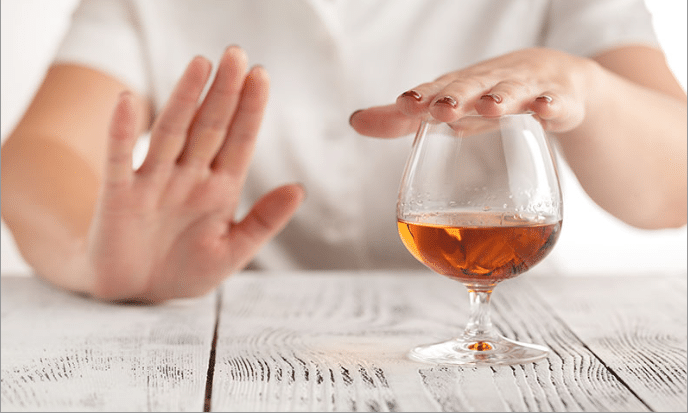
Enjoying the occasional glass of wine with dinner is fine, but excessive alcohol intake can be one of the biggest contributors to fat accumulation and bloating.
Alcohol contains mostly empty calories, meaning that it is high in calories but lacking in important nutrients, such as vitamins and minerals. It also acts as a diuretic — a substance that increases the production of urine. This can lead to dehydration and water retention.
Some research also suggests that alcohol could influence levels of certain hormones that affect hunger and appetite[mfn]https://www.medicinenet.com/how_do_i_lose_face_fat_and_jawline/article.htm[/mfn]. For example, it may reduce levels of leptin, a hormone that promotes feelings of fullness.
What’s more, studies show that heavy drinking could increase inflammation and may be associated with an increased risk of weight gain, increased belly fat, and obesity. Keeping your alcohol consumption in check is the best way to avoid alcohol-induced bloating and weight gain.
According to the current Dietary Guidelines for Americans, moderate drinking is defined as up to two drinks per day for men and up to one drink per day for women[mfn]https://www.healthshots.com/health-news/fat-loss-near-the-skins-surface-could-be-the-reason-why-your-face-is-sagging/[/mfn]. Excessive alcohol intake may contribute to weight gain, including in the face. It could also cause dehydration, water retention, and decreased feelings of fullness.
4. Drink More Water
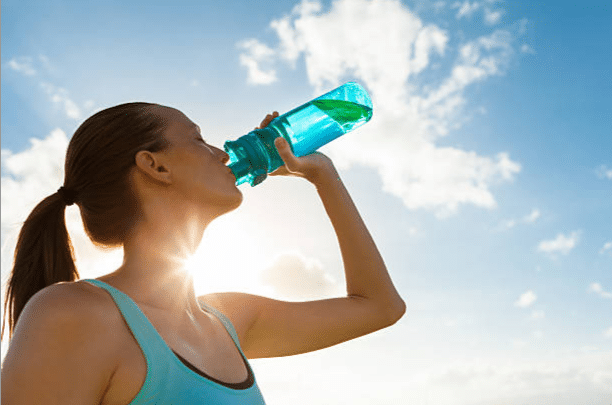
Drinking water is crucial for your overall health and can be especially important if you’re looking to lose facial fat. Studies suggest that water can keep you feeling full and enhance weight loss[mfn]https://www.healthshots.com/health-news/fat-loss-near-the-skins-surface-could-be-the-reason-why-your-face-is-sagging/[/mfn].
In fact, one small study found that drinking water before a meal significantly decreased the number of calories consumed during the meal.
Other research suggests that drinking water may temporarily increase your metabolism. Increasing the number of calories you burn over the course of the day can help boost weight loss.
Drinking water can decrease calorie intake and temporarily increase metabolism. It may also reduce fluid retention to prevent bloating and swelling in your face.
5. Get More Sleep & Rest

Catching up on sleep is an important overall weight loss strategy. It may also help you lose facial fat. Sleep deprivation can cause an increase in levels of the stress hormone cortisol. High cortisol levels come with a long list of potential side effects, including weight gain.
Studies have shown that high cortisol levels can increase appetite and alter metabolism, resulting in increased fat storage. Furthermore, squeezing in more sleep may help you shed extra pounds.
One study found that better sleep quality was associated with successful maintenance of weight loss. Conversely, studies show that sleep deprivation can lead to increased food intake, weight gain, and decreased metabolism.
Ideally, aim for at least 8 hours of sleep per night to aid weight management and facial fat loss. Sleep deprivation can alter metabolism and increase food intake, weight gain, and cortisol levels. Therefore, getting enough sleep may help you increase facial fat loss.
6. Cut Back on Refined Carbs and Improve Overall Diet
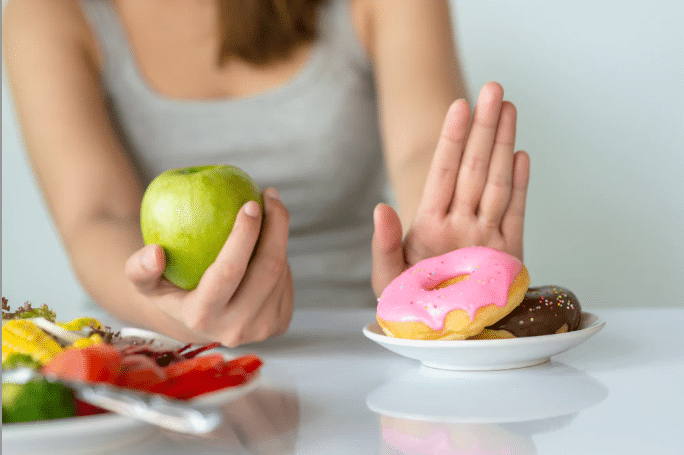
Foods containing refined carbs, such as cookies, crackers, and pasta, are common culprits of weight gain and increased fat storage. These carbs have been heavily processed, which strips them of their beneficial nutrients and fiber and leaves little behind besides sugar and calories.
Because they contain very little fiber, your body digests them rapidly. This leads to spikes and crashes in blood sugar levels and may make you more likely to overeat.
One study of 277 women showed that a higher intake of refined carbs was associated with a higher risk of obesity and a greater amount of belly fat[mfn]https://www.healthline.com/nutrition/lose-fat-in-face-cheeks[/mfn].
No studies have looked directly at refined carbs’ effects on facial fat. However, replacing refined carbs with whole grains may help increase overall weight loss, which may also aid facial fat loss.
Refined carbs can increase blood sugar levels and lead to overeating and fat accumulation. Switching to whole grains may help increase facial fat loss.
7. Reduce Salt and Sodium Intake
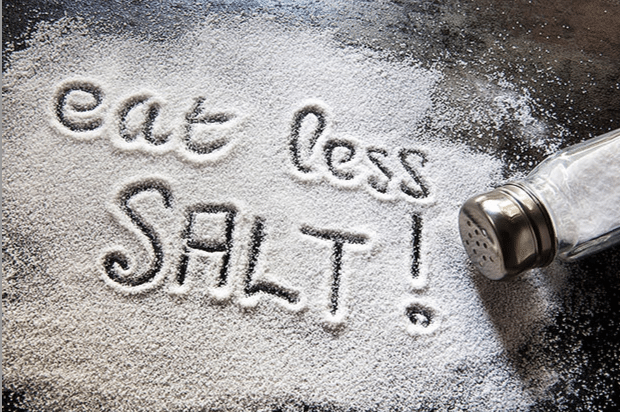
The main source of sodium in most people’s diets is table salt. You might add it to food from a shaker, but you may also consume it passively as part of processed or premade foods, sauces, and other everyday condiments.
One trademark symptom of excess sodium intake is bloating, which may contribute to facial puffiness and swelling. That’s because sodium causes your body to hold on to extra water — this is called fluid retention.
Several studies have shown that a higher intake of sodium can increase fluid retention, especially in people who are more sensitive to the effects of salt[mfn]https://www.medicinenet.com/how_do_i_lose_face_fat_and_jawline/article.htm[/mfn].
Processed foods account for more than 75% of sodium intake in the average diet, so cutting out convenience foods, savory snacks, and processed meats can be an effective way to reduce your sodium intake.
Reducing your sodium intake may make your face appear slimmer. Diets high in salt cause the body to retain water. Water retention causes swelling and puffiness in various parts of the body, including the face. This may give the illusion of excess facial fat.
People who suspect they are sensitive to fluid retention should try to limit foods with high salt content. This includes most processed meals and snacks.
Preparing meals and snacks at home gives people greater control over the amount of salt in their diet. As the body stops holding onto fluid, the face should start to appear slimmer.
8. Eat More Fiber
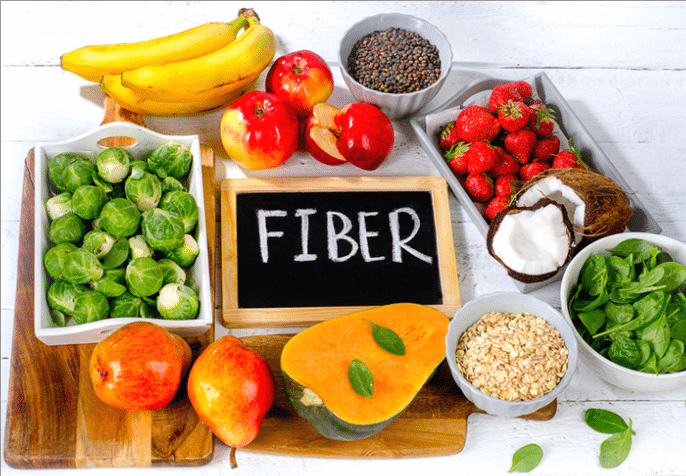
One of the most popular recommendations for slimming your face and losing cheek fat is to increase your intake of fiber.
Fiber is a substance in plant foods that your body doesn’t absorb after you consume it. Instead, it moves slowly through your digestive tract, keeping you feeling fuller for longer. In this way, it can help curb cravings and decrease appetite.
In one study of 345 people with overweight and obesity, higher fiber intake was associated with increased weight loss and helped people stick to a low-calorie diet.
Another review of 62 studies suggested that eating more soluble fiber may reduce both body weight and waist circumference, even if you don’t restrict your calorie intake.
Soluble fiber is a type of fiber that forms a gel when mixed with water. One common type of soluble fiber in the diet is beta glucan, which is found in oatmeal, barley, and other cereals.
Fiber is naturally found in a variety of foods, including fruits, vegetables, nuts, seeds, whole grains, and legumes. Ideally, you should aim to consume at least 25–38 grams of fiber per day from these food sources.
Increasing your fiber intake could help reduce your appetite and promote weight loss and fat loss, which may help slim down your face.
9. Opt for a Cosmetic Surgery

If nothing else helps, a plastic surgeon can perform procedures like CoolSculping or a chin tuck for the jawline.
Watch the video below to learn more on how to lose face fat:
How Do You Lose Facial Fat After Pregnancy?
For new mommies, who wish to lose facial fat, you can try out these methods to lose facial fat:
- Breastfeed your child often to lose pregnancy fat: When you breastfeed, the fat cells stored in the body are utilized to fuel milk production.
- Choose lean protein such as chicken breast, turkey, and tofu to prevent fluid retention. Fluid retention can be a major cause of chubby cheeks.
- Avoid food with high sodium: Sodium-rich foods can lead to water retention in the body, making you look chubby. It is always a smart idea to cut down on sodium consumption while breastfeeding.
Can You Lose Fat From Just Your Face?

Can you only lose face fat? Although losing excess body fat could help reduce the amount of fat in certain body parts — including your face — there is little evidence to support the concept of spot reduction, or fat loss targeted to a specific area.
Several older studies have found that spot reduction is not effective for increasing fat loss in a specific body part. This is because fat cells are stored throughout your body and can all be broken down and used as fuel during exercise.
These fat stores can come from any part of your body, not just from the specific area you’re exercising. Therefore, instead of aiming to lose fat only from your face, it’s best to focus on overall fat loss and weight loss, which can lead to a reduction in excess facial fat.
Rather than focus on losing excess fat from your face specifically, it’s best to focus on overall fat loss and weight loss. When you lose weight overall, you’ll lose it from your face too.
Preventing Excess Facial Fat
There are several important long-term habits and broader lifestyle changes you can use to help prevent weight gain and fat accumulation in the long run:
- Eat a balanced diet: Following a healthy diet that includes plenty of nutrient-dense foods — such as fruits, vegetables, whole grains, and legumes — can help you maintain a moderate weight and support your overall health.
- Exercise regularly: Experts generally recommend getting at least 150 minutes of moderate-intensity aerobic exercise per week to improve health and prevent weight gain.
- Limit your intake of processed foods: Not only are processed foods typically high in calories, sodium, and added sugar, but they have also been linked to an increased risk of weight gain over time.
- Stay hydrated: Drinking plenty of water is a simple but effective way to manage your weight and prevent excess facial fat.
- Get plenty of sleep: Some research suggests that better sleep quality could improve long-term weight loss maintenance.
- Try to manage your stress levels: Increased stress can increase appetite and cravings and make it more challenging to stay active, all of which can contribute to weight gain. Stress reduction techniques such as yoga and meditation may be beneficial.
Following a healthy diet, staying active, getting plenty of sleep, and managing your stress levels can help prevent excess facial fat and weight gain in the long term.
From Bornfertilelady
Few studies have investigated ways to reduce facial fat directly. The best way to prevent and reduce facial fat is to maintain a moderate weight generally.
People can achieve this by altering their diet, exercising regularly, and getting the right amount of sleep. Cardio exercises are particularly beneficial for burning excess body fat. Weight loss, in general, should make the face appear leaner.
For best results, be sure to pair these tips in this article with a balanced diet and regular exercise to support weight management and improve overall health.
If a person is struggling to lose weight, they may wish to consult a dietitian, a doctor, or a personal trainer. People should always talk with a doctor before making major changes to their diet or exercise routines.
[bwla_faq faq_topics=”frequently-asked-questions-on-how-to-lose-face-fat” sbox=”1″ paginate=”1″ pag_limit=”5″ list=”1″ /]

